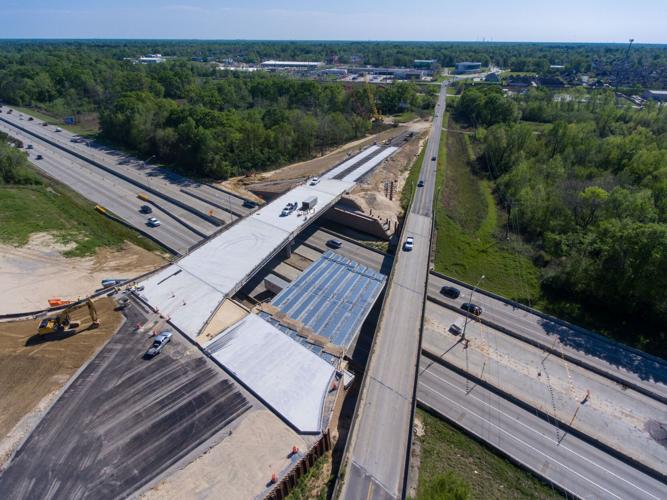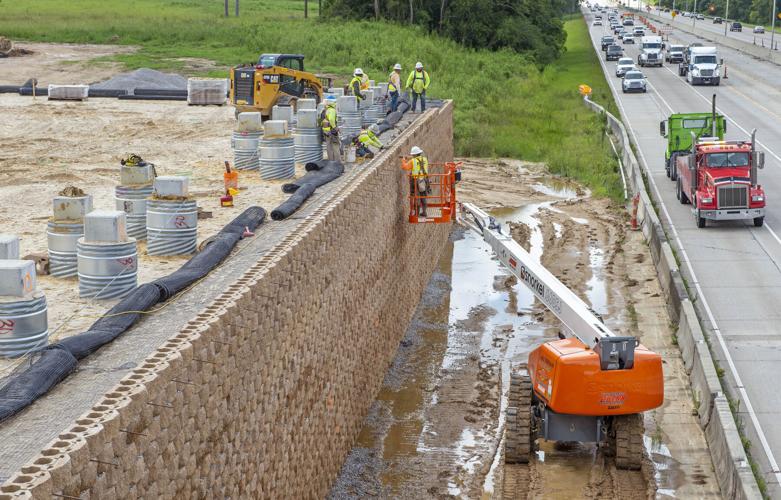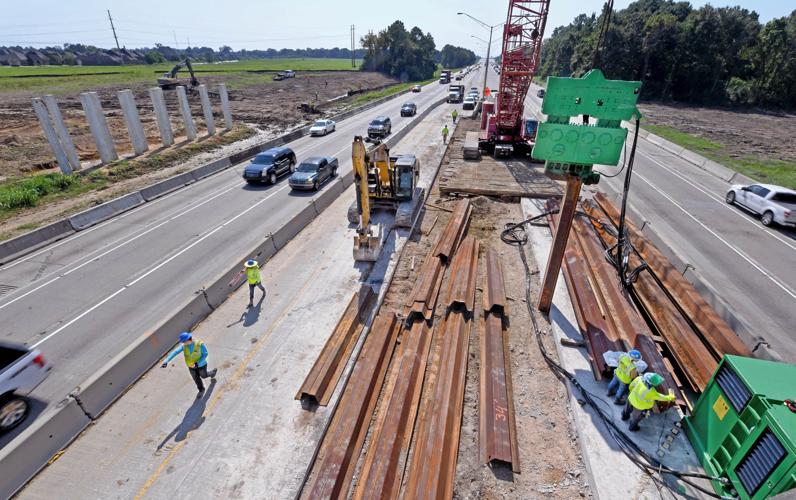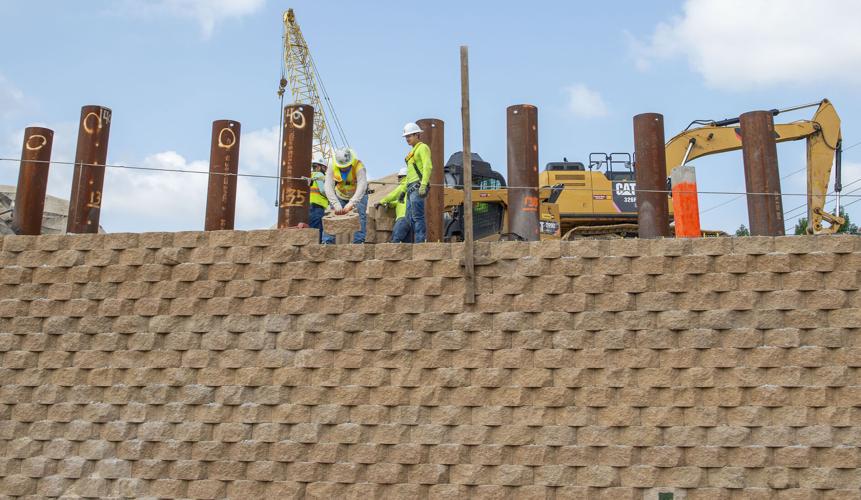The long-awaited project to create an Interstate 10 interchange at Pecue Lane in Baton Rouge is entering its third and final phase, the Louisiana Department of Transportation & Development announced Thursday.
On track for an estimated completion date in 2026, the project is designed to widen Pecue Lane from Perkins Road to Airline Highway and improve access to Woman's Hospital by connecting the road with I-10.
According to DOTD, current work includes constructing the Pecue Lane bridge over Ward's Creek, paving the new southbound Pecue Lane roadway, grading on- and off-ramps for I-10, and installing draining structures.
The project is on schedule for its first traffic shift to a newly paved Pecue Lane by this fall.
In the final phase, the interchange project will widen Pecue Lane from two to four travel lanes between Perkins Road and Airline Highway. The KCS railroad crossing will undergo reconstruction to provide a smoother crossing over the tracks, and pedestrian sidewalks will be constructed on the west side of Pecue Lane.
Rieger Road will be extended to intersect with Pecue Lane, and the on- and off-ramps to I-10 will be constructed.
"When the Pecue interchange opens, you’re going to have another service road come off of Rieger that can bring you to Pecue and you can get on the interstate, you can get to Airline or you can get to Perkins," East Baton Rouge city-parish transportation and drainage director Fred Raiford said.
The final piece of the project will be opening the diverging diamond interchange, the second of its kind in the state, to traffic.
When negotiating a diverging diamond, traffic briefly moves to the opposite side of the roadway, and drivers can take free left turns because they do not cross opposing traffic.
"It’s going to be almost like our roundabouts," Raiford said. "People are going to take a while to understand how to use it, but when they do, it’s going to make significant improvements. Particularly in getting on and off the interstate."
The interchange project has been in the works for well over a decade, with a report calling for its existence as early as 2008. City-parish officials began to purchase land for the project to commence in 2017.
Initial phases involved the clearing and grubbing of land, followed by the construction of mechanically stabilized earth walls on both sides of I-10 and the establishment of two multi-lane overpass bridges.
At a cost of about $69.9 million, according to DOTD, the project is expected to significantly improve traffic flow on Pecue Lane and the surrounding areas of Siegen Lane and Airline Highway.
"The connectivity is going to be there, it just hasn’t gotten there yet," Raiford said. "When it does, I think you’re going to see a significant reduction in traffic complaints and concerns in regards to why is it taking so long. That’s what we try to look at from our standpoint when trying to monitor traffic."





